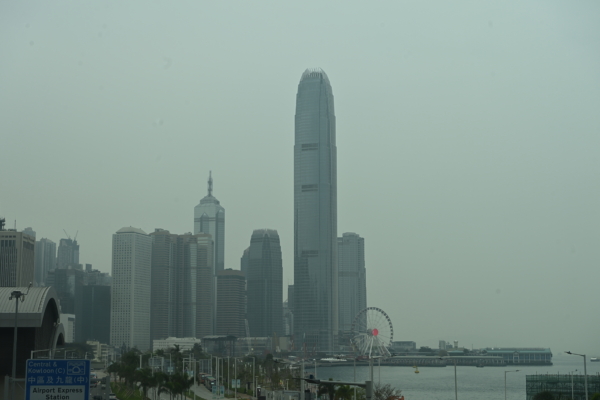Over 200 restaurants in Hong Kong have closed down since the beginning of this year due to the economic downturn and the impact of Hong Kong residents traveling north to mainland China for consumption, including many long-established iconic eateries. Industry insiders suggest that given the current dining environment in Hong Kong, “another 2000 might have to close down.”
According to incomplete statistics from the Hong Kong Economic Daily, from the beginning of the year until the end of June, over 290 establishments in Hong Kong have either shuttered or are on the verge of closing down. This includes various sectors such as retail, dining, fitness, entertainment, with the dining industry being the hardest hit, accounting for nearly 70% of the closures.
Notable closures include the 35-year-old renowned restaurant Golden Bell at Admiralty, scheduled to cease operations in September. The 36-year-old Hung Star Group announced on July 2nd the immediate closure of their Mong Kok MOKO branch, signifying the conclusion of all their operations. The 30-year-old Federal Palace Restaurant in Tuen Mun also abruptly closed in early July.
In addition to the recent closures mentioned above, several chain brands and long-standing establishments have also announced closures in the past two months.
Established in 1992, the Jing Lok Group, once boasting over 20 brands and 30+ restaurants, abruptly informed its staff of winding up all operations on June 6th.
Regarding Jing Lok Group’s closure, the president of the Catering Industry Association, Wong Ka-ho, pointed out that with the prevailing economic downturn and the trend of Hong Kong residents traveling north for consumption, the operational pressure on chain restaurants has become increasingly unbearable, perhaps leading them to see an uncertain market outlook, thereby choosing to cease operations.
The popular congee chain brand “Joy Hing” with over 30 branches at its peak, announced complete closure in early May. The last branch of the 44-year-old cha chaan teng brand “Yuen Kee Milk,” also ceased operations on May 29th. The Hong Kong-style hotpot restaurant “Spring, Summer, Autumn, Winter,” founded in 1990, closed at the end of May. Earlier this year, the iconic 40-year-old Jin Shan Seafood Restaurant in Yau Ma Tei had already closed its Wu Sang Street branch, leaving only one store in Jordan.
Not only local brands are facing closures, but many international brands in Hong Kong are also downsizing or shutting down their operations.
The well-known Thai dessert brand After You Dessert Café closed its last outlet at the end of May, completely exiting the Hong Kong market. The last branch of the Japanese ramen brand “Kintan Ramen” in Causeway Bay closed on June 30th. After 7 years in Hong Kong, the popular Taiwanese croissant brand “August Tang” bid farewell to the Hong Kong market in February…
According to Hong Kong Economic Times, Chan Chak-chiu, director of the Crown Domain Commerce and Economic Research Center, stated that the wave of closures in the catering industry is primarily driven by residents traveling north for consumption. The profit warnings from fast-food chains Cafe de Coral and Fairwood stated, “The trend of Hong Kong residents spending abroad has led to a decline in customer flow,” as well as “The trend of Hong Kong residents traveling north for consumption continues to drag down local business.”
Blogger Chanjet analyzed that besides consumption shifts, “high costs” are also a significant factor. Monthly rents in prime Hong Kong shopping districts can reach HKD 250,000, while dishwasher salaries have surged from HKD 6,000 to HKD 15,000 over the past three years. Food costs have also been impacted, with a 10% to 15% increase due to fluctuations in the global supply chain.
Furthermore, food delivery apps like Meituan have squeezed traditional phone-ordering systems that many long-standing establishments rely on; while platforms like Pinduoduo and Taobao divert local spending with discounted products, rapidly encroaching on the takeout market share of traditional Cantonese restaurants.
Hong Kong’s Fairwood Group attributes the decline in performance to the trend of residents spending abroad, the continued weak and sluggish economy in both Hong Kong and the mainland, and consumer sentiment.
A report from S&P Global shows that in June, Hong Kong’s Purchasing Managers’ Index (PMI) was 47.8, down 1.2 percentage points from May, marking the fifth consecutive month of contraction. The decline was the most significant since April 2022, and the outlook for the second half of the year is expected to be even more challenging.
Red Dining Web’s analysis indicates that in recent years, amidst a backdrop of declining consumer spending power and tourist spending downgrades, the number of dining establishments in Hong Kong has not decreased proportionally, with over a thousand more than before the pandemic. However, if Hong Kong’s economy does not recover to pre-pandemic levels, coupled with the prevailing trend of residents traveling north for consumption, another 2000 dining establishments in Hong Kong could face closure.

